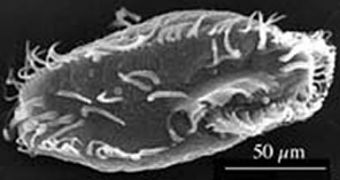We all know that how we look, behave and function is a question of genes. And genes are made of DNA. But now, a team at Princeton's Department of Ecology and Evolutionary Biology, in a research to be published in the journal "Nature", challenges this.
They have found an "epigenetic" pathway bypassing DNA, in a type of Lamarckian evolution, which says that an organism transmits to its offspring traits acquired during its lifetime for improving its success, like the long neck of the giraffe, which experienced a continuous stretching to reach the tree tops.
The research was made on the ciliate protozoan Oxytricha trifallax, a relative of the more known Paramecium. Typical animal (and human) cells each have one nucleus, the ciliates have two: a somatic nucleus, accomplishing the cell's metabolism, and the germline nucleus, harboring the DNA required for sexual reproduction.
When two ciliate cells copulate, the somatic nucleus is dissolved, but it must be remade in the offspring, so that they survive. 95 % of the DNA from the germline nucleus is thrown away for building a new somatic nucleus, containing one third of the DNA amount from a human cell nucleus! Thus, just 5 % of the protozoan's DNA is free for heredity. But, the uni-cell animals always manage through "genome acrobatics" to compass the two nuclei.
The team guessed there was an existing temporary data storage in the type of a DNA or RNA coming from the parents. "The notion of an RNA cache has been around for a while, as the idea of solving a jigsaw puzzle by peeking at the cover of the box is always tempting. These cells have a genomic puzzle to solve that involves gathering little pieces of DNA and putting them back together in a specified order. The original idea of an RNA cache emerged in a study of plants, rather than protozoan cells, though, but the situation in plants turned out to be incorrect", said co-author Laura Landweber, associate professor of ecology and evolutionary biology.
RNA has a structure close to the DNA and decodes its genetic information during the protein synthesis. Using RNA-destroying chemicals (RNAi) before mating caused a disruption of development, and even stopped DNA rearrangement.
Further investigation encountered RNA templates early on in the cell development, and they were long-lived enough to rebuilt the somatic nucleus. Furthermore sophisticated investigation involved the use of both artificial RNA and DNA templates encoding a novel, pre-determined pattern; like DNA of the ciliate made of 1-2-3-4-5 pattern and transposing two segments, like 1-3-2-4-5. The injected artificial templates caused the anticipated results, thus the RNA template could rebuild a somatic nucleus.
"This wonderful discovery showed for the first time that RNA can provide sequence information that guides accurate recombination of DNA, leading to reconstruction of genes and a genome that are necessary for the organism. It reveals that genetic information can be passed on to following generations via RNA, in addition to DNA", said Meng-Chao Yao, director of the Institute of Molecular Biology at Taiwan's Academia Sinica.
If this applies to mammalian cells, this would lead to new methods of manipulating genes.

 14 DAY TRIAL //
14 DAY TRIAL //